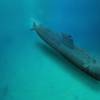A high-level meeting working on a legal instrument to protect marine biological diversity has heard how International Maritime Organization (IMO) International Maritime Organization (IMO) measures are effectively implemented on the high seas.
Biological diversity in the world’s oceans is under threat from many areas today. Climate change, pollution, acidification, seabed mining, over-exploitation of fish stocks and invasive alien species all threaten marine life.
The pressures are particularly high in coastal areas, but in the high seas - areas beyond national jurisdiction – although pressures are less, there can be gaps in the legal regime as well as problems surrounding compliance and enforcement.
To address this issue, the General Assembly of the United Nations is developing a legally-binding instrument under the United Nations Convention on the Law of the Sea. Among other things, it will cover the sustainable use of ocean resources in order to protect and preserve marine biodiversity.
During a preparatory meeting, at UN Headquarters in New York (26 August-9 September), IMO, with representatives from two Member states (Liberia and Sweden) and the shipping industry, has given a presentation on how its regulations for shipping are currently enforced in areas beyond national jurisdiction through a well-functioning structure and organisation; and how many of these regulations actively contribute to the conservation of marine biological diversity.













